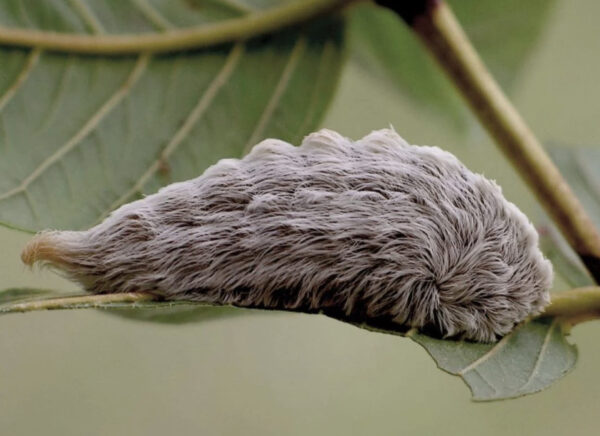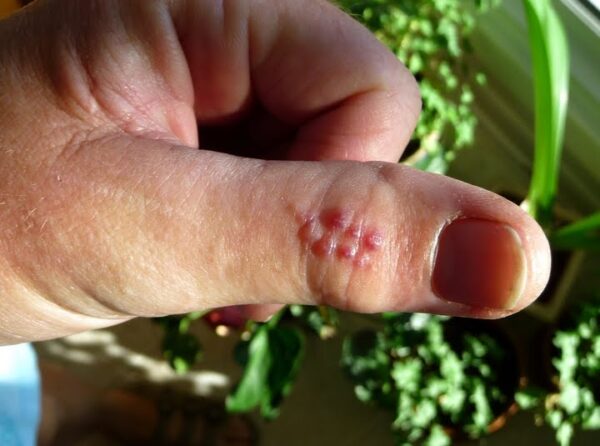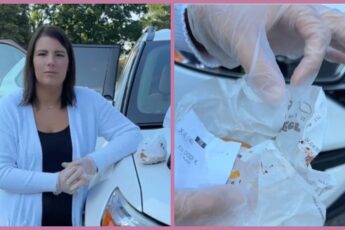For centuries, humans have honed their instincts to recognize and avoid potential threats in the wild, a skill vital for survival. Although most wildlife is completely harmless to us humans, it is important to be on alert when you are out in nature.
The Encounter at the Playground: Leslie Howe’s Story
In a quaint park nestled in Gwinnett County, Georgia, Leslie Howe embarked on a routine outing with her family. Little did she know that this ordinary day would soon take a terrifying turn.

Amidst the laughter and play of her children, Leslie’s keen eye caught sight of a peculiar sight—a furry creature resembling a harmless ball. Instincts kicked in, urging her to steer clear, an intuition that would prove lifesaving.
”Feels like a wasp sting, but worse”
What Leslie encountered that day was no ordinary creature but a harbinger of pain and discomfort—the puss caterpillar.
Cloaked in deceptive fluff, this innocuous-looking larva harbors a potent weapon—venomous bristles capable of inflicting excruciating stings. Despite its cuddly appearance, the puss caterpillar conceals a sinister truth, one that poses a significant threat to unsuspecting individuals.
Understanding the Threat: Anatomy and Behavior of Puss Caterpillars
To comprehend the danger posed by puss caterpillars, one must delve into their anatomy and behavior. Draped in deceptive fur reminiscent of a feline’s soft coat, these larvae wield toxic bristles as their primary defense mechanism.
Found across a wide swath of the United States, from New Jersey to Florida and westward to Texas, they lurk on foliage, waiting to ensnare unwitting victims.

“It feels like a wasp sting but worse. The pain hits immediately and gets worse after the creature sticks, and can even make your bones hurt. How badly it gets stuck depends on where it gets stuck and how many tags have dug into your skin. People who’ve had it stuck on their hands have reported feeling the pain up to their shoulders and it lasting for up to twelve hours,” shared ethnologist Don Hall, as reported by Expressen.
Eric Day, manager of Virginia Tech’s Insect ID Lab, experienced firsthand the agony inflicted by a puss caterpillar’s sting. A routine task of mowing the lawn transformed into a painful ordeal when he inadvertently brushed against a tree hosting the venomous larvae. Despite the burning sensation subsiding, the aftermath lingered for weeks, a testament to the potency of their venom.
Dealing with the Sting: First Aid Measures and Treatment

For those unfortunate enough to fall victim to a puss caterpillar’s sting, prompt action is crucial. Swiftly remove any venomous hairs using adhesive tape and cleanse the affected area with soap and water.
To alleviate discomfort, apply hydrocortisone cream or a baking soda paste, and monitor for any adverse reactions. Should symptoms escalate or persist, seeking medical attention is imperative to prevent complications.
Preventing Encounters: Tips for Avoiding Puss Caterpillars
While encounters with puss caterpillars are best avoided altogether, proactive measures can minimize the risk of stings. Exercise caution when navigating wooded areas or handling foliage, as these larvae often camouflage themselves amidst leaves and branches. Educate children and fellow outdoor enthusiasts about the dangers posed by puss caterpillars, empowering them to recognize and avoid potential hazards.
Puss caterpillars are very rarely deadly, but the sting could cause anaphylaxis, which can be life-threatening.
Take a look at the unusual and mysterious caterpillar here:
Please share this article to warn others!







